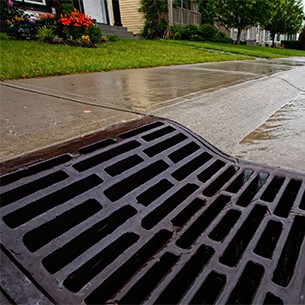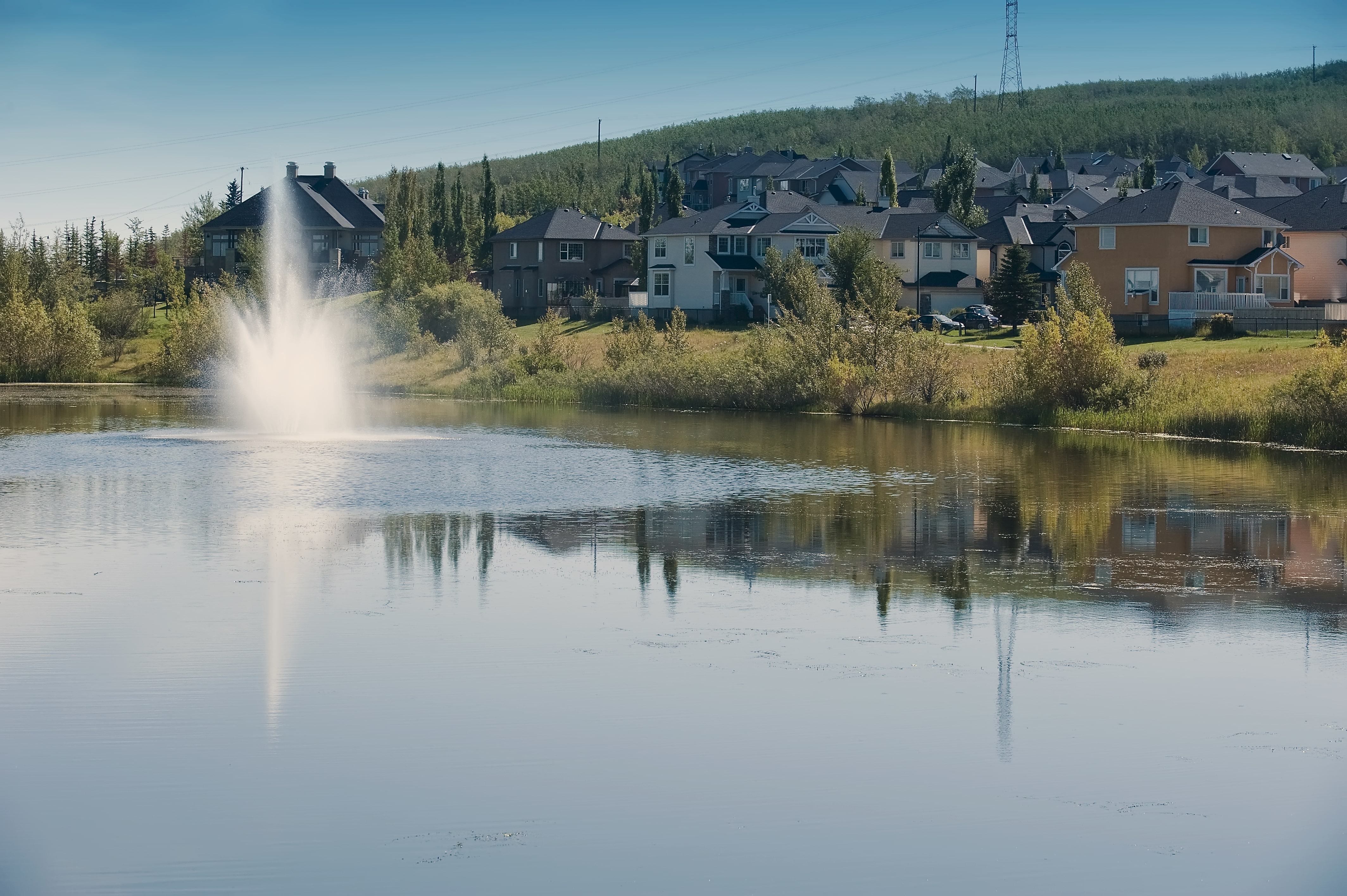Some of the most common customer care questions we get in our communities are about stormwater. Keep reading to find out more about storm drains, trap lows, and storm ponds and how they keep the water system healthy in each community and municipality.
As part of the development of a new community, storm drains (catch basins) are mapped in to drain the water when it rains. Storm drains are the metal grates along the edge of the road and are the primary way that water gets into underground pipes called the stormwater management system. These grates along the edge of the road are only a portion of the storm drain structure. Under the sidewalk is a barrel that collects the water. The barrel is attached to a pipe that allows the water to be whisked away into the river. To avoid the pooling of water, it is important to keep these grates clear of debris.


If you see a drain that is blocked, full of debris, or damaged, be sure to contact your Municipality:
City of Calgary à https://www.calgary.ca/cfod/csc/311.html
Airdrie à https://www.airdrie.ca/index.cfm?serviceID=23
Cochrane à https://www.cochrane.ca/directory.aspx
Chestermere à https://www.chestermere.ca/FormCenter/Contact-Us-4/Contact-Us-35
Rocky View à https://www.rockyview.ca/contact
Trap Lows and Storm Ponds are types of ponding areas that are designed to manage large volumes of water during fast rainfall. These ponding areas are constructed to temporarily hold back runoff so that areas downstream do not receive large quantities of water all at once. These systems are designed in compliance with the municipal approved Stormwater Management Plan to handle severe rainstorms and prevent property damage and flooding.
A Trap Low is a temporary stormwater storage site that assists the underground pipe system during a rainstorm. Trap Lows are designed into the streets, lanes and even parks to accommodate high volumes of water by allowing water to pool and then slowly drain down for up to 24 hours. Do not panic if you see water rising in your street, or even in your driveway, during a fast rainfall. Predetermined grading plans are followed at the time of construction to ensure the water will flow towards the Trap Low and slowly drain into catch basins once the rain subsides. There is an easement registered on any lot that will have temporary ponding on it. This easement is registered to the Municipality and legally permits the ponding to occur on the lot until it safely drains away as designed.
example of Trap Low

Storm ponds collect and hold rainfall before it reaches the rivers, creeks, and streams. Not only can storm ponds act as beautiful spaces within the community, but they also serve to protect homes and businesses from possible flooding after a storm, reduce erosion risks, and reduce the number of sediments and pollutants entering the waterways. There are several different kinds of storm ponds. Dry storm ponds remain dry and do not contain water most of the time. These “ponds” only fill with water during heavy rain, functioning in a similar way to wet storm ponds, filling with water very quickly, to prevent the stormwater system from becoming overwhelmed and causing flooding.
Example of Storm Pond
To learn more about Storm Water mitigation in your municipality visit:
The city of Calgary à https://www.calgary.ca/uep/water/water-and-wastewater-systems/storm-drainage-system/storm-drainage-system.html
Airdrie à https://www.airdrie.ca/index.cfm?serviceID=516
Cochrane à https://www.cochrane.ca/2131/Stormwater-Facilities
Chestermere à https://www.chestermere.ca/875/Stormwater-Storm-Ponds
Rocky View à https://www.rockyview.ca/springbank
Or reach out to us directly at customercare@qualicocommunities.com

 Translate
Translate